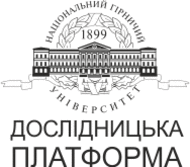№81-6
Criteria for division of separation processes
I. Mladetskyi1, K. Levchenko1, N. Kushniruk2, І. Cheberiachko1, V. Zhuravlov1
1Technical University "Metinvest Polytechnic" LLC, Zaporizhzhia, Ukraine
2Kryvyi Rih National University, Kryvyi Rih, Ukraine
Coll.res.pap.nat.min.univ. 2025, 81:64–73
Full text (PDF)
https://doi.org/10.33271/crpnmu/81.064
ABSTRACT
Purpose. To justify the feasibility of applying a new criterion for evaluating the efficiency of separation processes, which enables an objective assessment of the performance of beneficiation equipment regardless of the degree of feed preparation.
The methods. The method of generalization of scientific information; analytical, probabilistic and statistical methods of research; mathematical modeling of the separator operation were used in the work.
Findings. The limitations of traditional criteria, such as the Hancock-Luiken index, in evaluating the separation stage were demonstrated. A new approach was developed to construct an efficiency criterion based on the ratio of the actual content of the valuable component to the theoretically achievable content under ideal separation conditions. A new indicator, Kβ, was proposed, which reached a value of 0.927 in a test case, indicating high separator efficiency. For waste product separation, the criterion Kν was determined as 0.944. A performance scale was proposed: low (below 0.3), medium (0.3-0.8), and high (above 0.8).
The originality. A novel efficiency criterion based solely on separation parameters was developed for the first time, excluding the influence of feed preparation. The proposed approach enables comparison between actual and ideal separation curves, taking into account the form of the middlings distribution function. A mathematical relationship was established between concentrate quality and the shape of the separation curve, allowing reliable efficiency evaluation even for complex functional profiles.
Practical implementation. The proposed criterion enables the assessment of the performance of any individual separator regardless of grinding degree or raw material origin. It provides engineers and operators with the ability to identify bottlenecks in the technological flow, make informed decisions on equipment upgrades, and optimize processes without altering the entire technological chain. The quantitative value of the Kβ indicator allows for the implementation of real-time efficiency monitoring, which is critical for automated control systems.
Keywords: separation processes, efficiency criterion, separation, separation curve, distribution function, concentrate quality, middlings.
References
1. Biletskyi, V. S., Oliinyk, T. A., Smyrnov, V. O., & Skliar, L. V. (2020). Osnovy tekhniky ta tekhnolohii zbahachennia korysnykh kopalyn. Kyiv: Lira-K.
2. Grishyn, M. V., & Beglov, K. V. (2021). Evaluating the effectiveness of fuel enrichment to reduce the risk of power plant costs. Scientific Notes of Taurida National V.I. Vernadsky University. Series: Technical Sciences, 3, 82–89. https://doi.org/10.32838/2663-5941/2021.3/14
3. Kravets, V. H., Biletskyi, V. S., Smyrnov, V. O., & Serhieiev, P. V. (2020). Modeliuvannia protsesiv zbahachennia korysnykh kopalyn. Kyiv: KPI im. Ihoria Sikorskoho.
4. Mladetskyi, I. K., & Pilov, P. I. (2005). Tekhnolohichni rozrakhunky pokaznykiv zbahachennia korysnykh kopalyn. Dnipropetrovsk: NHU.
5. Mladetskyi, I. K., Pilov, P. I., Levchenko, K. A., & Kuvaiev, Ya. H. (2019). Vyprobuvannia i kontrol protsesiv zbahachennia korysnykh kopalyn. Dnipro: Zhurfond.
6. Aliiev, E.B. (2018) Kryterii otsinky yakosti protsesu separatsii nasinnievoi sumishi. Konstruiuvannia, vyrobnytstvo ta ekspluatatsiia silskohospodarskykh mashyn, 48, 170–175. https://doi.org/10.32515/2414-3820.2018.48.135-142
7. Hapich, H., Pikarenia, D., Orlinska, O., Kovalenko, V., Rudakov, L., Chushkina, I., Maksymova, N., Makarova, T., & Katsevych, V. (2022). Improving the system of technical diagnostics and environmentally safe operation of soil hydraulic structures on small rivers. Eastern-European Journal of Enterprise Technologies, 2(10(116)), 18–29. https://doi.org/10.15587/1729-4061.2022.255167




